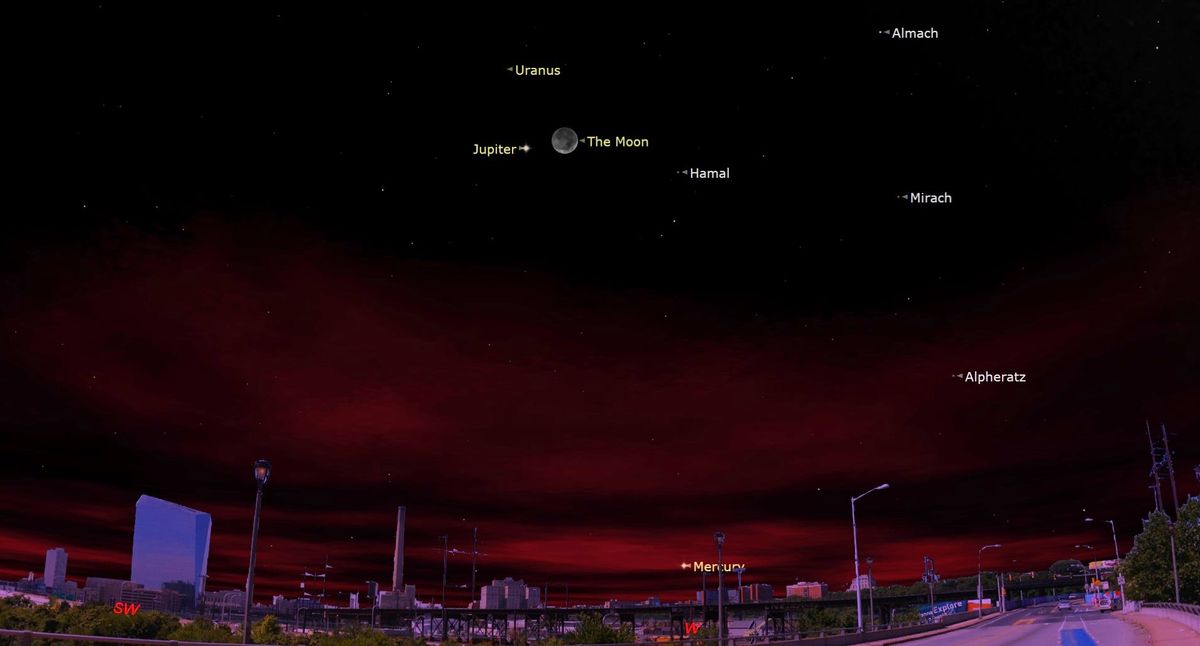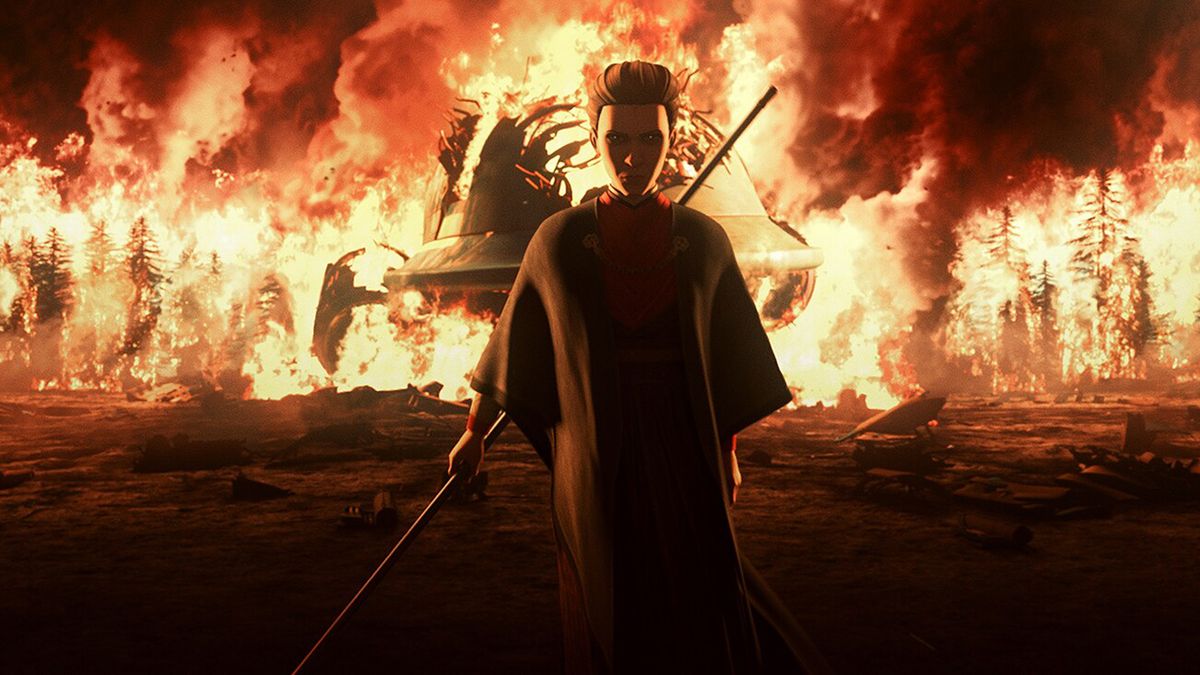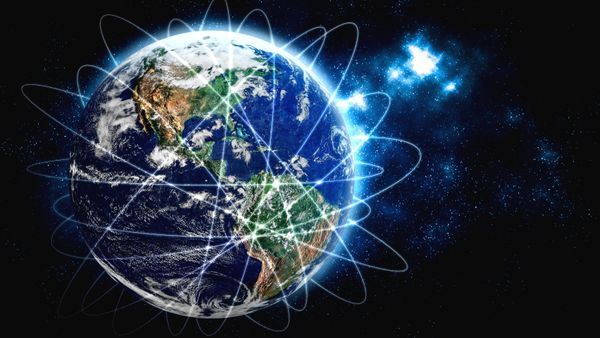Observing the Night Sky
If the weather is clear on Wednesday evening, take a moment to look to the western sky around mid-twilight, approximately one hour after sunset. At one-third up from the horizon to the overhead point, a captivating sight awaits: an elegant, slender crescent moon, 18 percent illuminated by sunlight. Positioned about 3 degrees to the left of this radiant lunar sliver is a brilliant silvery white “star.”
Identifying Jupiter
Although it may appear as a star, the celestial body beside the moon is, in fact, the planet connected with the supreme sky-god, Jupiter. To gauge the distance between the two celestial bodies, it is useful to remember that a clenched fist, when held correctly, spans approximately 10 degrees. By holding up your fist, you can estimate the separation of the moon and planet to be roughly one-third the width of your fist away from each other.
Appreciating the Night Sky
While the moon and Jupiter will not appear closely clustered together, they are likely to capture the attention of observers. During the early and mid-evening hours, they will gradually descend down the western sky, ultimately disappearing beyond the western horizon shortly after 10 p.m. local daylight time.
Earthshine Phenomenon
For enhanced visibility, consider using binoculars to observe not just the moon but also the enchanting Earthshine phenomenon. This phenomenon reveals the waxing crescent moon as a delicate arc of yellowish-white light encompassing a ghostly bluish-gray sphere.
Jupiter’s Brightness
Although Jupiter remains the brightest star-like entity in the evening and the first to emerge each night at dusk, it continues to outshine even the most luminous stars. Notably, it shines almost twice as brightly as the dazzling star Sirius, which sparkles in the southern portion of the sky about one-third of the way up during early evenings.
- Jupiter shines steadily, exuding a sense of calm, while Sirius twinkles vigorously, almost as if striving to match Jupiter’s brilliance.
Jupiter’s Movement
Throughout March, Jupiter will gradually descend toward the gleam of evening twilight in the west-northwest. By the final week of April, it will set around the conclusion of evening twilight. This month, Jupiter lags behind Earth in its perpetual orbital journey around the sun, moving eastward among the stars.
Currently positioned within Aries the Ram, Jupiter will transition into Taurus the Bull on April 28. Subsequently, it will be enveloped by the sunset’s radiance and will resurface in the second week of June, appearing low in the east-northeast sky just before sunrise.
Exploring the Night Sky
To catch a glimpse of Jupiter near the crescent moon, refer to guides on the best telescopes and binoculars. For those interested in capturing celestial images, resources on photographing the planets and the finest cameras and lenses for astrophotography are available for reference.
Image Credit: Alan Dyer/Stocktrek Images/Getty Images
Image/Photo credit: source url





